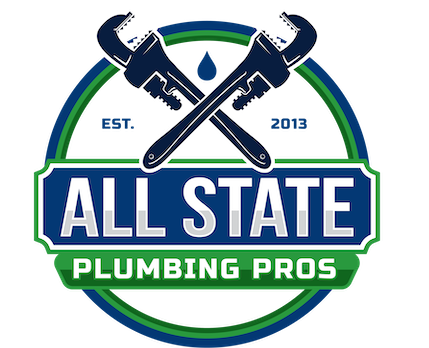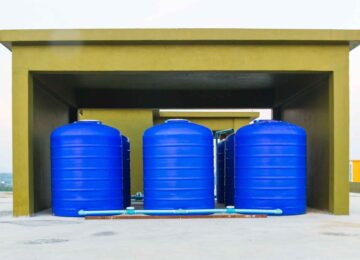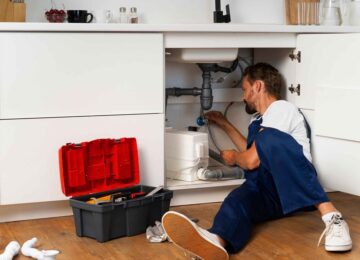Plumbing hot and cold water lines are the foundation of every home’s water system. These supply pipes bring cold water from the main line into the house, distribute it to fixtures, and carry heated water from your water heater to taps and appliances. When installed and maintained correctly, hot and cold water lines provide safe, reliable flow throughout the home. When problems arise, such as leaks, crossovers, or frozen pipes, they can disrupt daily life and cause costly damage.
For homeowners in Fairfield County, CT, and Westchester County, NY, it’s especially important to understand these plumbing systems because of local code requirements and cold-weather risks. All State Plumbing Pros specializes in installing, repairing, and maintaining water supply pipes so families and businesses can depend on strong, safe water flow year-round.
Need reliable hot and cold water line service in Fairfield County or Westchester? Call All State Plumbing Pros today, licensed plumbers available 24/7.
What Are Hot and Cold Water Lines?
Hot and cold water lines are the network of pipes that connect your home’s main water supply to sinks, showers, toilets, and appliances. The cold water line feeds directly into fixtures and the water heater, while the hot water line distributes heated water from the tank or tankless unit to faucets and showers.
These lines are typically installed side by side, with clear fittings and shut-off valves that allow for maintenance. Proper separation of hot and cold water lines ensures safe drinking water, prevents pressure drops, and keeps water temperatures consistent at the tap. In Connecticut and New York, plumbing codes mandate backflow prevention and approved materials to protect public health and safety.
Common Materials for Hot and Cold Water Lines
The choice of material affects water quality, energy efficiency, and long-term performance. Homeowners often ask which type of pipe works best for hot and cold water distribution. Each option comes with advantages and drawbacks.
Copper Pipes
Copper has long been the standard for water supply lines. It is durable, resists high temperatures, and can last 50 years or more. However, copper is costly and may corrode in areas with acidic water. Installation also requires soldering, which is best handled by licensed plumbers.
PEX (Cross-linked Polyethylene)
PEX is a flexible plastic pipe that has become the go-to option for modern plumbing systems. It is color-coded, red for hot water, blue for cold, which makes identification easy. PEX handles freezing temperatures better than copper, making it a strong choice for Connecticut winters. It installs quickly and with fewer fittings, reducing leak risks.
CPVC and Other Options
CPVC (chlorinated polyvinyl chloride) is another plastic material commonly used for hot and cold lines. It is affordable and heat-resistant, but can become brittle over time. Galvanized steel is found in older homes but is no longer recommended due to corrosion issues.
Comparison Table: Pipe Materials for Hot and Cold Water Lines
| Material | Pros | Cons | Typical Lifespan |
|---|---|---|---|
| Copper | Durable, heat-resistant, long lifespan | Expensive, requires soldering, may corrode | 50+ years |
| PEX | Flexible, freeze-resistant, color-coded | Sensitive to UV light, not recyclable | 25–40 years |
| CPVC | Affordable, handles hot water | Brittle over time, limited flexibility | 20–30 years |
Not sure which material is right for your home in Danbury or New Milford? Our licensed plumbers can guide you to the best, code-compliant choice.
Layouts for Plumbing Hot and Cold Water Lines
The way hot and cold water lines are arranged in your home impacts water pressure, efficiency, and wait times at fixtures. Three main layouts are used today:
- Trunk-and-Branch System: A main pipe (trunk) runs through the home, with smaller branch lines feeding fixtures. This is common in older homes in Fairfield County. It is cost-effective but may result in uneven water pressure.
- Manifold or Home-Run System: Each fixture has its own dedicated line connected to a central manifold. This design reduces pressure drops and makes isolating fixtures easier for repairs. Many newer homes in Westchester County use this system.
- Zoned System: A hybrid that separates areas of the home into zones, improving efficiency in multi-story houses or large layouts.
Understanding your plumbing layout helps determine whether upgrades can improve flow and energy efficiency.
Common Problems with Hot and Cold Water Lines
Even high-quality materials can develop issues over time. The most frequent problems homeowners face include:
- Leaks at fittings or joints: Often caused by aging connections or improper installation.
- Crossover issues: Hot water entering the cold line, typically from a faulty valve or poor installation.
- Frozen pipes: Cold water lines are especially vulnerable in Connecticut and New York winters, leading to burst pipes and water damage.
- Low water pressure: Sediment buildup, corrosion, or undersized pipes can cause pressure drops at fixtures.
If you notice leaks, low pressure, or frozen pipes in Ridgefield or Wilton, call All State Plumbing Pros before the problem escalates.
Installation and Replacement: DIY vs Professional
While some homeowners may attempt DIY plumbing projects, hot and cold water line installation requires precision and code compliance. Cutting and connecting pipes incorrectly can lead to contamination, leaks, or unsafe water temperatures.
Professional plumbers bring the right tools, experience, and knowledge of local permits and inspections. In CT and NY, licensed plumbers ensure materials meet state standards, connections are leak-free, and safety devices like shut-off valves and backflow preventers are installed correctly. Hiring a professional not only saves time but also avoids expensive future repairs.
Maintenance Tips for Hot and Cold Water Lines
Routine maintenance protects your plumbing system and extends its lifespan. Homeowners should schedule annual inspections to catch small issues before they turn into emergencies.
Key maintenance practices include:
- Insulating exposed pipes: Prevents freezing during cold winters and reduces energy loss from hot water pipes.
- Flushing lines: Removes sediment and buildup that can reduce water pressure.
- Checking shut-off valves: Ensures they function properly during emergencies.
- Monitoring pressure: Installing a pressure regulator helps avoid stress on pipes and fittings.
In Connecticut and New York, fall is the best time to schedule pipe inspections before freezing temperatures arrive.
Conclusion
Hot and cold water lines are essential to every home’s plumbing system, delivering safe, reliable water where you need it most. Choosing the right materials, installing them correctly, and maintaining them regularly ensures long-term performance and prevents costly problems like leaks, burst pipes, or low water pressure.
That said, if you’re experiencing leaks, frozen pipes, or issues with your hot and cold water lines, it’s best to call in a licensed professional. At All State Plumbing Pros, we’re available 24/7 to help homeowners and businesses in Connecticut and New York. Whether you need a quick repair, a full replacement, or an inspection of your plumbing system, contact us today for fast, dependable service you can trust.
FAQs
What are the hot and cold water pipes called?
They are commonly referred to as supply lines. The cold water line feeds fixtures directly and supplies the water heater, while the hot water line distributes heated water throughout the home.
What is the hot and cold water system in plumbing?
This system consists of two networks of pipes: cold water supply pipes that deliver fresh water to fixtures, and hot water lines that carry heated water from the water heater to taps and appliances. Together, they form the backbone of a home’s plumbing system.
Which side has hot and cold plumbing?
In most homes, cold water is on the right side and hot water is on the left when facing a faucet. This standard arrangement helps prevent confusion and ensures consistent water flow at sinks, showers, and tubs.
Are hot water and cold water lines connected?
Yes, but only at the water heater. The cold water line supplies the heater, and the hot water line carries heated water out to fixtures. Beyond this point, the two lines remain separate to maintain safe temperatures and prevent crossover.

![Plumbing Hot and Cold Water Lines: What CT & NY Homeowners Should Know Plumbing hot and cold water lines are the foundation of every home’s water system. These supply pipes bring cold water from the main line into the house, distribute it to fixtures, and carry heated water from your water heater to taps and appliances. When installed and maintained correctly, hot and cold water lines provide safe, […]](https://allstateplumbingct.com/wp-content/uploads/2025/09/plumbing-hot-and-cold-water-lines-750x420.jpg)



Leave a Reply